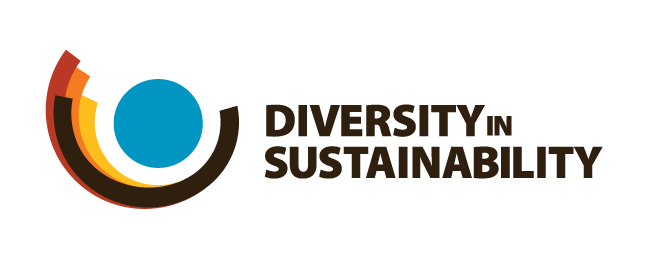Diversity in Sustainability at Ecobabes
An Ecobabes get-together in pre-COVID times. Photo credit: Maria Lorena Nunez
On October 5, 2020, Heather Mak and Marie Jurcevic hosted a session with 25 members of Ecobabes over Zoom, to provide more details about their new organization, Diversity in Sustainability. They provided some context about how it came to be: the wider landscape on racial injustice in recent times, the historical racism in the conservation movement, the underrepresentation of people of colour in non-profits, foundations, environmental organizations and socially responsible investment firms, the challenges that have been faced by diverse students and professionals, and examples of sustainability in traditional and sustainable knowledge from BIPOC communities. They also discussed what Diversity in Sustainability is, the definition of the industry, planned offerings and how everyone could get involved. The rest of the session included a panel discussion and three breakout sessions.
Panel discussions
A panel discussion was then held with Adrienne Lo, a Senior Specialist in Partnerships at WWF Canada, Sukriti Nagpal, Business Development Manager at Vena Solutions, and Grace Saunders-Hogberg, Founder at Cloudburst Impact Consulting. They spoke of their experiences entering the field and challenges faced as women of colour. These included:
Growing up with the mentality to work harder than white counterparts
Having to forge their own paths without existing networks in the sustainability space
Having supportive family members, whether educated parents or partners to help with financial support
Actively feeling invisible within the sustainability community and being subject to microaggressions that questioned their belonging due to skin colour, and finding comfort/familiarity among other people of colour
Breakout discussions
Three breakout groups were then facilitated by Heather Mak, Marie Jurcevic and Amy Castator. Four questions were asked:
What privileges did you have that enabled you to be in this field?
Conversely, what barriers did you have to overcome to get into this field?
How can we enable more diverse individuals to join us in sustainability?
Have you seen other examples where diversity, equity and inclusion initiatives have been effective?
Breakout session #1
In the first breakout sessions, the groups discussed privileges and barriers. Interestingly, in many groups the participants felt that the field of sustainability has been inclusive of women, and dominated by women from a numbers perspective – although not always at leadership levels. Some other privileges and barriers were described as follows:
Privileges
Having financial support from family
Having education in the field
Having a dual income and support from a partner
Being white, cis and able-bodied – easily accepted in field
Being born in Canada
Having English as a first language
Having pre-existing networks in the field and having easier access to job opportunities
Barriers
Having to go into significant debt for education and unpaid internships
Lack of a straightforward path to achieving a strong financial future
Being a financial provider for one’s family
Being a minority, trans or disabled and having to prove your value
Being an immigrant – not understanding the cultural context to build closer relationships
Feeling pressure to hide cultural aspects of who you are because you feel it is not well understood by others; that it will prevent you from fitting in
Having a lack of English skills overshadow other competencies
Building a network from scratch
In thinking about the intersectional nature of systemic oppression, and the notion of privilege and identity in different contexts, one quote stood out to one of the breakout groups from Ajah Hales, a writer, race educator and social thinker:
“I am a Black female cis-gendered Christian woman. In a room full of white people, Blackness is my most salient identity. In a room full of Black men, gender becomes my most salient identity. Saliency is not limited to spaces that I enter as an oppressed minority, it also applies to spaces I enter as a member of the oppressive majority.”
See the original post here from Ajah Hales.
Breakout session #2
The second breakout session covered how we might enable more diverse individuals to join us in sustainability, and to provide more examples where diversity, equity and inclusion initiatives have been effective. It is notable that in two of the three sessions, people had difficulty identifying effective initiatives. However, some ideas that could potentially be helpful in increasing diversity and inclusion:
Setting the intention, reflecting and making a conscious effort in organizations;
Tapping into/creating youth programs – for example the parliamentary assistant program that deliberately targets diverse youth;
Taking the time to understand the demographic you’re trying to bring in and building awareness programs;
Normalizing sustainability as a “safe place” for people of colour;
Using inclusion as an attraction/retention strategy;
In dialogues and other initiatives, actively seeking missing voices from the room;
Participating in mentorship and sponsorship initiatives, and recognizing that they could be as easy as a coffee chat
Using your privilege to help advance minorities
Taking time to listen to people with differing opinions from yours
Partnering with other initiatives where complementary initiatives are occurring
Closing
We thank you for everyone sharing their experiences so candidly with us all. If you’d like to get involved with Diversity in Sustainability, we will be looking for:
Advisory panel members
Trial members to test out our portal
All practitioners to fill out our “State of Diversity and Inclusion in Sustainability” survey to come early November
Join our LinkedIn Group!
Visit our:
Twitter: @diversityinsust
Instagram: @diversityinsustainability
Thank you!
Please email us for more details: info@diversityinsustainability.com
Downloads:

